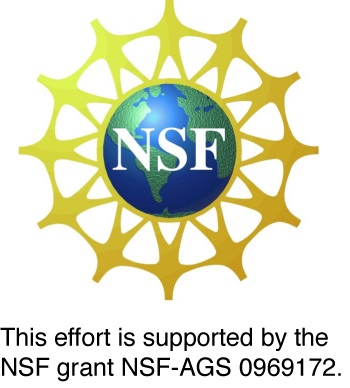 The CU Boulder disdrometer team is currently preparing to go out for the VORTEX2 2010 campaign. We will be out in the field between 1 May and 15 June deploying disdrometers in the paths of the tornadoes. Sponsored through the NSF grant ATM-0910424 this will be our 2nd year in the field.
The CU Boulder disdrometer team is currently preparing to go out for the VORTEX2 2010 campaign. We will be out in the field between 1 May and 15 June deploying disdrometers in the paths of the tornadoes. Sponsored through the NSF grant ATM-0910424 this will be our 2nd year in the field.
 The CU Boulder disdrometer team is currently preparing to go out for the VORTEX2 2010 campaign. We will be out in the field between 1 May and 15 June deploying disdrometers in the paths of the tornadoes. Sponsored through the NSF grant ATM-0910424 this will be our 2nd year in the field. Last year we encountered 11 supercell thunderstorm with 2 weak and one strong tornado. For information about last years deployment check out our VORTEX2 2009 web page and the photo gallery.
The CU Boulder disdrometer team is currently preparing to go out for the VORTEX2 2010 campaign. We will be out in the field between 1 May and 15 June deploying disdrometers in the paths of the tornadoes. Sponsored through the NSF grant ATM-0910424 this will be our 2nd year in the field. Last year we encountered 11 supercell thunderstorm with 2 weak and one strong tornado. For information about last years deployment check out our VORTEX2 2009 web page and the photo gallery.
For information about this years deployment check out our VORTEX2 blog, and the photo gallery 2010.
CU disdrometer in the news:
Daily Camera: Boulder Scientists prepare for six-week tornado chase
Channel 4 Denver:
Scientific America: Twister Mysteries Lure Scientists to Launch Massive Midwest Field Experiment
Tornado Surrounded by Instruments as Scientists Aim to Catch Their “Perfect Storm”
This year’s team will include:
Stephanie Higgins Danielle Nuding Evan Kalina James Rudolph
U. of Colorado (Geology) U. of Colorado (ATOC) U. of Colorado (ATOC) U. of Colorado (ATOC)




Carlos Lopez George Fernandez Scott Landolt Cameron Redwine Katja Friedrich
U. of Florida U. of Florida NCAR Metro State U. of Colorado (ATOC)



What do we do with the disdrometers in a supercell thunderstorm?
The objective of a mobile deployment is to observe temporal and spatial variations of drop-size distributions by transecting the same storm several times close to the VORTEX2 radar facilities. To achieve this goal, disdrometers will be placed several minutes ahead of the thunderstorms relative to their translation direction while the thunderstorms pass over the instruments. For fast-moving storms (>30 knots), the fixed laser disdrometer teams will deploy using a picket fence strategy perpendicular to the storm motion in advance of approaching storms (Figure below, left panel). For slow-moving storms (< 30 knots), the disdrometers will be relatively closely spaced (0.5-1 km) and deployed in order to sample the connecting region between the hook appendage and the storm core (Figure below, right panel). The mobile disdrometer will focus on northeast-southwest transects through the hook appendage, where practical, both just north and just south of the low-level mesocyclone, with the expectation of data collection during westbound transects only (eastbound transects may often lack adequate probe-relative winds for useful measurements). Fixed site deployment lines aligned with the storm motion will also be considered on a case-by-case basis (as road networks and storm motion allows) to sample hook appendage PSD temporal evolution characteristics shown). After the storm passes over the instruments, the mobile disdrometers will be relocated again ahead of the storm, parked, and measurements will be repeated. The NSSL instruments will operate in an unmanned mode, i.e., the instruments will be placed outside the mobile mesonet vehicles. The CU instruments will operate in an unmanned deployment mode during slow-moving storms and truck deployment mode during fast-moving storms.

Figure: Idealized deployment of mobile disdrometers during the VORTEX 2010 for a) fast-moving and b) slow-moving storms. Disdrometers are indicated as red arrows with the idealized transects indicated as red dashed lines. Four disdrometers will be deployed as part of this proposal and two instruments will be provided by the NSSL. The road network is indicated with gray dashed lines.
